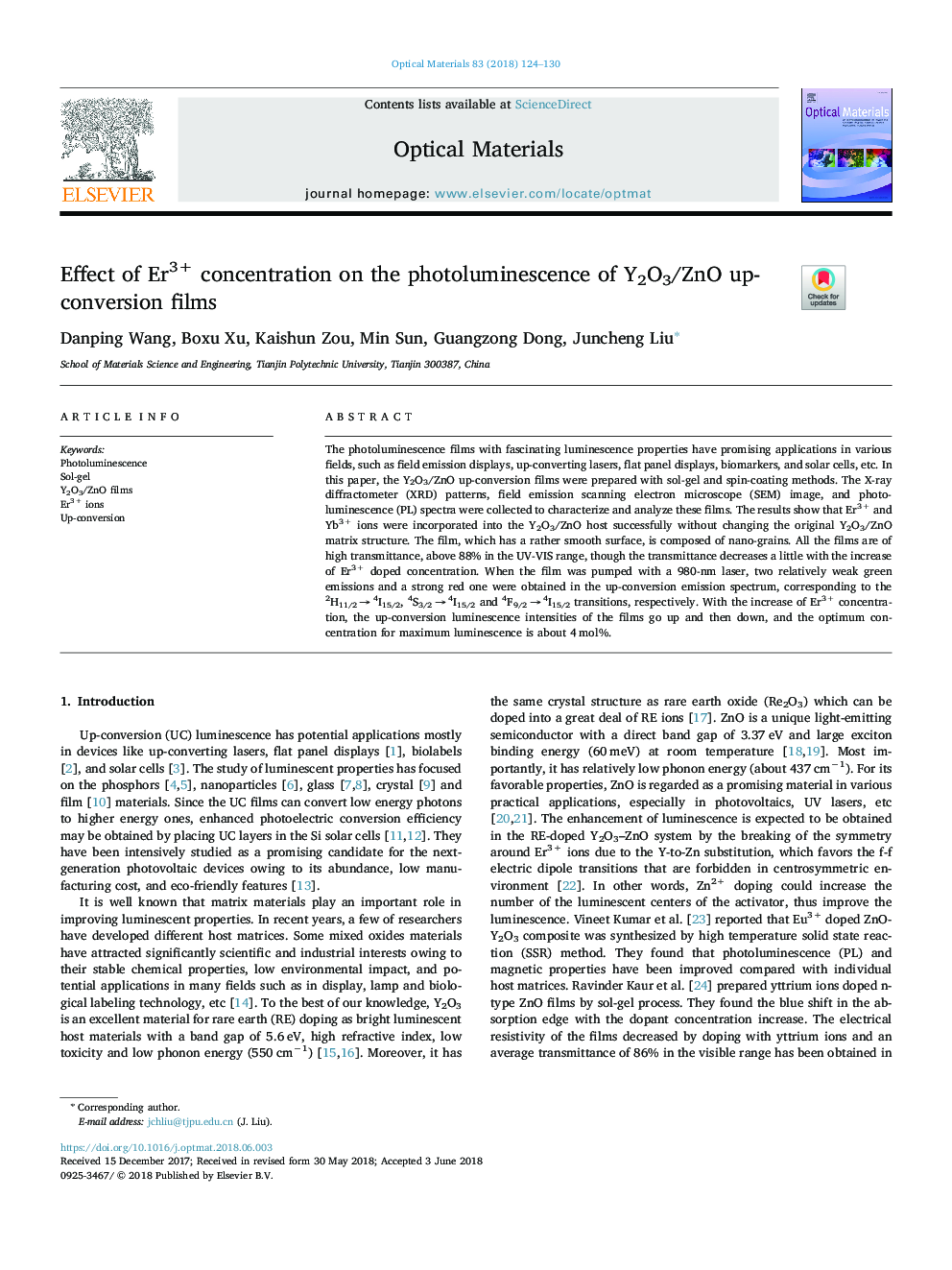| Article ID | Journal | Published Year | Pages | File Type |
|---|---|---|---|---|
| 7906035 | Optical Materials | 2018 | 7 Pages |
Abstract
The photoluminescence films with fascinating luminescence properties have promising applications in various fields, such as field emission displays, up-converting lasers, flat panel displays, biomarkers, and solar cells, etc. In this paper, the Y2O3/ZnO up-conversion films were prepared with sol-gel and spin-coating methods. The X-ray diffractometer (XRD) patterns, field emission scanning electron microscope (SEM) image, and photoluminescence (PL) spectra were collected to characterize and analyze these films. The results show that Er3+ and Yb3+ ions were incorporated into the Y2O3/ZnO host successfully without changing the original Y2O3/ZnO matrix structure. The film, which has a rather smooth surface, is composed of nano-grains. All the films are of high transmittance, above 88% in the UV-VIS range, though the transmittance decreases a little with the increase of Er3+ doped concentration. When the film was pumped with a 980-nm laser, two relatively weak green emissions and a strong red one were obtained in the up-conversion emission spectrum, corresponding to the 2H11/2â¯ââ¯4I15/2, 4S3/2â¯ââ¯4I15/2 and 4F9/2â¯ââ¯4I15/2 transitions, respectively. With the increase of Er3+ concentration, the up-conversion luminescence intensities of the films go up and then down, and the optimum concentration for maximum luminescence is about 4â¯mol%.
Related Topics
Physical Sciences and Engineering
Materials Science
Ceramics and Composites
Authors
Danping Wang, Boxu Xu, Kaishun Zou, Min Sun, Guangzong Dong, Juncheng Liu,
